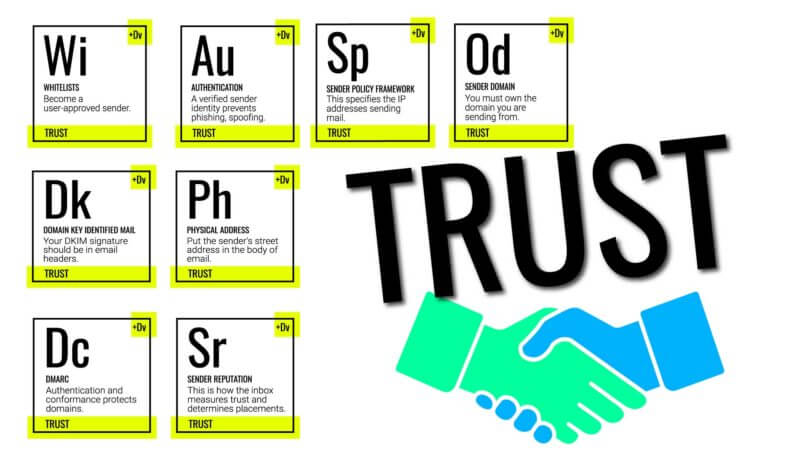MARKETING
Email marketing: Harnessing the trust factor

In recent weeks, we’ve been exploring the themes laid out in the first-ever Periodic Table of Email Optimization and Deliverability. After Permission, and inextricably tied to it, is the concept of trust.
Gaining permission from a recipient to send them email sets the stage for building trust. This includes both the trust of the recipient and the trust of their ISP, which ultimately controls which emails are delivered, which go into the spam folder and which are blocked entirely.
A number of technical measures, designed to verify the sender of an email, fall under the blanket of Authentication (Au) and represent the basic requirements that mass-senders must fulfill to gain the trust of inbox providers.
Domain Key Identified Mail (Dk), also known as DKIM, refers to mail that uses a public/private cryptography key set to verify the identity of the sender. Sender Policy Framework (Sp), or SPF, is a different authentication standard that specifies which IP addresses are authorized to send mail for a given domain. Domain-based Message Authentication and Conformance (Dc), or DMARC, aims to help brands prevent their domains from being used by other entities for malicious purposes.
Maintaining that trust also means including the Physical Address (Ph) of the entity sending the email which, according to CAN-SPAM regulation, must appear in the body of the email. A sender can also gain credibility by being placed on an inbox provider’s Whitelist (Wi), a list of IP addresses and/or domains that are permitted into a particular network, allowing emails to bypass typical checks designed to quarantine emails.
Finally, the Sender Domain (Od) and Sender Reputation (Sr) elements refer to the fact that marketers need to own the domain from which they are sending emails, and that they need to develop and cultivate a good reputation with inbox providers, since that reputation for abiding by responsible practices will affect how the sender’s emails are placed – in the inbox or in the spam folder – going forward.
Download the newest Periodic Table now and ensure your email marketing’s on the right track.
About The Author
















